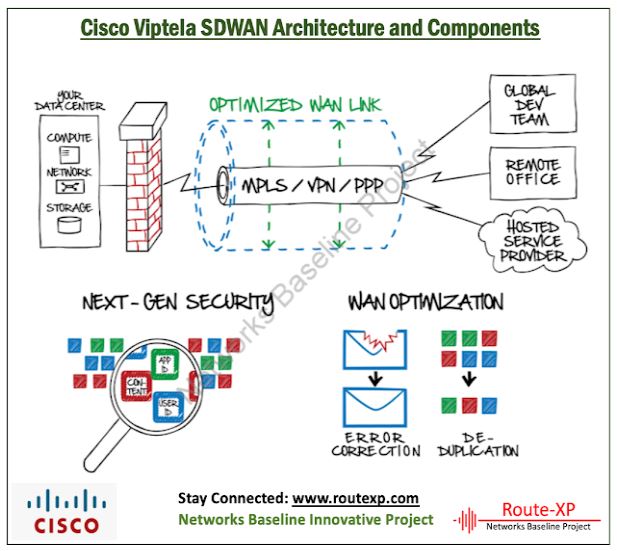Maximizing Cost-Efficiency with SD-WAN
Maximizing Cost-Efficiency with SD-WAN
When it comes to making networking decisions, cost-efficiency is a top priority for businesses. SD-WAN technology offers a solution that addresses this concern while delivering outstanding performance and scalability.
SD-WAN leverages intelligent routing algorithms to optimize network traffic and reduce costs. By intelligently choosing the best path for data transmission, SD-WAN minimizes the reliance on expensive MPLS connections and utilizes cost-effective broadband internet connections. This enables businesses to achieve significant savings without compromising performance and reliability.
"SD-WAN's intelligent routing capabilities optimize network traffic and reduce costs by leveraging less expensive internet connections." - John Smith, Networking Expert
In addition to intelligent routing, SD-WAN uses advanced bandwidth optimization techniques to make the most of available network resources. It employs features such as compression, deduplication, and Quality of Service (QoS) to prioritize critical applications and ensure efficient bandwidth utilization. This results in reduced bandwidth costs and improved overall network performance.
Furthermore, SD-WAN provides centralized management and control, allowing businesses to streamline their network operations and reduce administrative overhead. With a centralized dashboard, IT teams can easily monitor and manage the entire network infrastructure, reducing the need for costly on-site visits and manual configuration changes.
Overall, SD-WAN technology offers substantial cost savings for businesses, making it an attractive choice for organizations of all sizes. By optimizing network traffic, utilizing cost-effective connections, and centralizing management, SD-WAN helps businesses maximize their cost-efficiency without compromising on performance or reliability.
Conclusion
In conclusion, SD-WAN, with its modern, agile, and cost-effective approach, is revolutionizing networking for businesses in today's digital landscape. The transformative benefits it offers, combined with robust security measures and ease of implementation, make it a valuable solution for organizations looking to optimize their network infrastructure.
SD-WAN's ability to enhance agility and performance while reducing costs has made it a preferred choice for enterprises of all sizes. By leveraging software-defined networking (SDN) and wide-area networking (WAN) technologies, SD-WAN optimizes network performance, streamlines operations, and enables businesses to adapt to the ever-changing demands of the digital landscape.
Furthermore, SD-WAN addresses security concerns by providing robust protection for data transmitted over the network. Its advanced security features allow organizations to implement secure connections and safeguards against potential cyber threats, ensuring the integrity and confidentiality of their data.
Implementing SD-WAN in your network infrastructure can be a seamless process with the right approach. By considering the necessary factors and following best practices, businesses can successfully deploy SD-WAN and unlock its full potential. The benefits of SD-WAN go beyond just enhancing network performance; it also maximizes cost-efficiency through intelligent routing, bandwidth optimization, and centralized management.
FAQ
What is SD-WAN?
SD-WAN stands for Software-Defined Wide Area Networking. It is a networking technology that utilizes software-defined networking (SDN) principles to optimize wide area networks (WANs) and improve network performance.
What are the benefits of SD-WAN?
SD-WAN offers numerous benefits for businesses, including increased agility, improved performance, reduced costs, enhanced security, and simplified network management. It allows for better application performance, faster deployment of new network sites, and increased bandwidth utilization.
How does SD-WAN technology work?
SD-WAN technology combines software-defined networking (SDN) and wide area networking (WAN) to optimize network performance and improve agility. It uses centralized management and control to dynamically route network traffic, prioritize mission-critical applications, and improve overall network efficiency.
How do I choose the right SD-WAN provider?
When selecting an SD-WAN provider, consider factors such as scalability, security features, ease of implementation, performance monitoring capabilities, and customer support. Research different providers, read customer reviews, and evaluate their track record to find the one that best suits your organization's needs.
How does SD-WAN address security concerns?
SD-WAN incorporates robust security measures to protect data transmitted over the network. It includes features like encryption, firewall integration, secure access, and threat intelligence. SD-WAN solutions also offer increased visibility and control over network traffic, enabling organizations to detect and mitigate potential security threats.
What are the steps to implement SD-WAN in my network?
Implementing SD-WAN involves several key steps. These include assessing your current network infrastructure, defining your goals and requirements, selecting an appropriate SD-WAN solution and provider, planning the deployment, testing and validating the solution, and finally, migrating and monitoring the network.
What are the differences between SD-WAN and traditional WAN?
SD-WAN offers several advantages over traditional WAN architectures. Unlike traditional WAN, SD-WAN provides centralized management, improved scalability, increased bandwidth efficiency, better application performance, and enhanced visibility and control over network traffic. SD-WAN also offers rapid deployment and agility, which are vital in today's dynamic business environment.
How does SD-WAN enhance network performance?
SD-WAN enhances network performance through application optimization, load balancing, and bandwidth management. It intelligently routes traffic based on application requirements and network conditions, ensuring better performance for critical applications. SD-WAN also provides real-time analytics and visibility to help troubleshoot and optimize network performance.
How does SD-WAN help reduce costs?
SD-WAN reduces costs through various mechanisms. It optimizes bandwidth usage, allowing organizations to maximize their existing network resources. SD-WAN enables organizations to use cost-effective internet connections instead of expensive dedicated links. Additionally, centralized management and automation simplify network operations, reducing the need for manual configuration and troubleshooting.
Keep in mind
In conclusion, SD-WAN offers a modern, agile, and cost-effective approach to networking. Its transformative benefits, robust security measures, and ease of implementation make it a valuable solution for businesses in today's digital landscape. If you have any further questions or require additional information, please don't hesitate to reach out to us.












